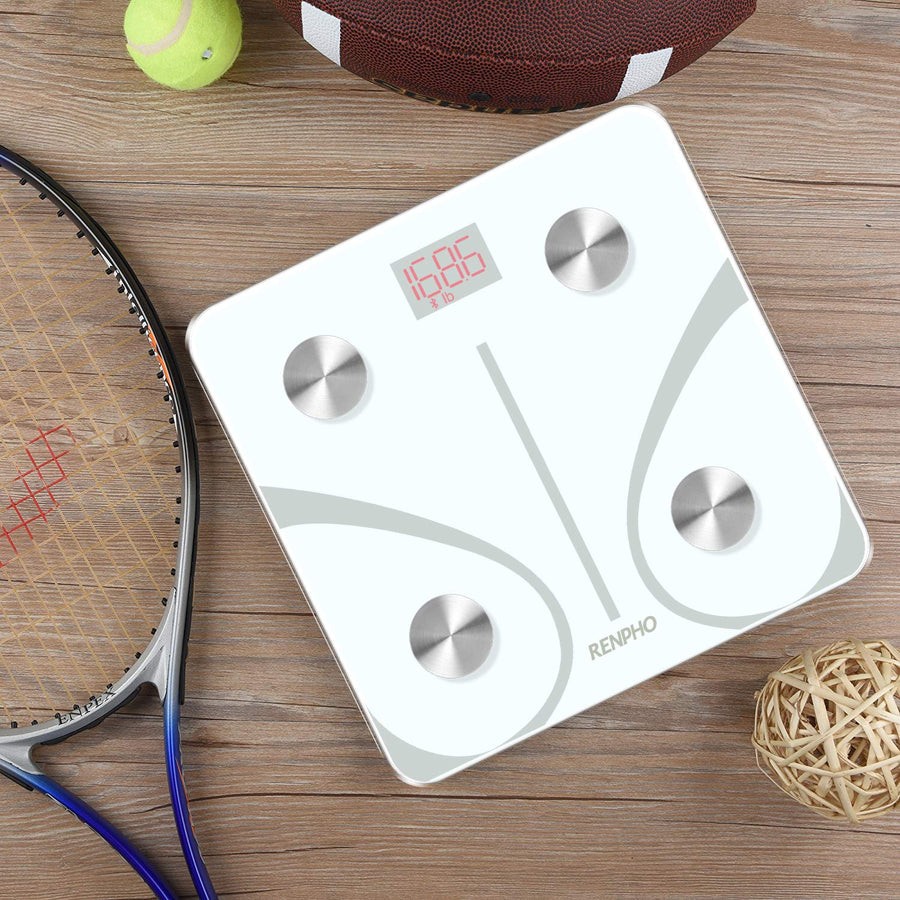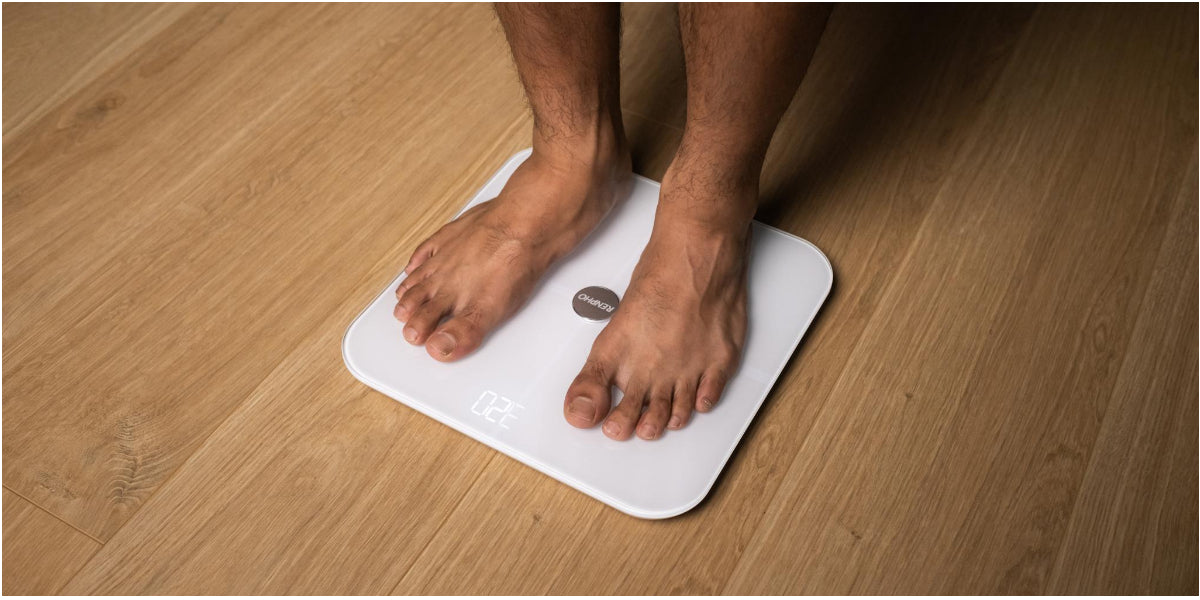The smart body fat scales have come a long way with technology advancements. They provide you with a plethora of information and metrics to track your overall fitness progress and health goals. If you want to improve your overall health and fitness, a smart body fat scale is a powerful tool to support you.
These scales don't only monitor body weight but also other body composition measurements such as bone mass, basal metabolic rate, body fat percentage, and bone density. However, people still struggle to use these devices effectively for accurate readings.
To make the most out of your digital scale and take advantage of its advanced features, it's important to understand how to use it properly. Follow these tips to maximise your smart body fat scale and achieve the best results. So, let's dive in!
Tips to Use Your Smart Scales for Best Results
Tip 1: Understand Your Body Composition Metrics

Equipped with a bioelectrical impedance analysis (BIA) technology, many smart body scales give you more information than your body weight to monitor not only your weight loss efforts but also any vital changes to essential health metrics. With key data within your reach, you’re empowered to make necessary lifestyle changes to, among other reasons, decrease your risk of illnesses, such as heart disease, cancer, and diabetes.
The best digital body composition scales offer comprehensive insights into your body composition measurements, such as body fat mass, bone mass, basal metabolic, and many more, to let you know where you are in terms of your fitness and health.
According to an online article written by Dr. Roxana Rhodes, an internist specialising in the treatment of adult disease, a healthy body composition helps reduce your risk of diseases, improve your energy, and boost your self-esteem. Understanding what each metric means and how it relates to your overall health and fitness objectives is, therefore, crucial.
RENPHO’s wide range of Smart Body Scales, for instance, offers data on 13 body composition indexes to help you make informed healthy decisions. Here are the metrics offered by RENPHO scales:
• Body Weight - refers to the body’s total body mass.
• Body mass index (BMI) - reflects the measurement of your weight in relation to your height to know if you’re in a healthy weight range.
• Body Fat Percentage - tells you how much of your body weight is composed of fat. A lower body fat percentage means a higher percentage of lean muscle mass.
• Fat-free Body Weight - refers to the total weight of all your body’s components except fat.
• Visceral fat - a type of body fat that surrounds important organs such as your intestine, stomach, and liver. Serious health issues may arise with having too much visceral fat, including fatty liver diseases, heart disease, high blood pressure, stroke, diabetes.
• Subcutaneous fat - describes the fat that is stored just beneath your skin. According to Cleveland Clinic, too much subcutaneous fat is a sign that you have too much visceral fat.
• Basal Metabolic Rate (BMR) - the number of calories required for your body to perform its most basic functions at rest, such as breathing, blood circulation, cell growth, and many more.
• Metabolic age - compares your BMR with the average BMR for people of the same chronological age.
• Muscle Mass - describes the physical size or weight of the muscles in your body. . Maintaining a high muscle mass percentage may help slow down muscle loss due to age.
• Bone Mass - a measurement of minerals in a certain volume of bone as defined by the National Cancer Institute.
• Body Water - the amount of water that makes up your body weight.
• Skeletal Muscle - a major type of muscle that connects to your bones and enables a wide range of movements and functions as defined by Cleveland Clinic.
• Protein- refers to the amount of protein in the body. Low protein mass is linked to high body fats. .
Tip 2: Measure under Consistent Conditions
To get accurate and consistent readings, it's essential to use your smart body scale under consistent conditions. For instance, when it comes to RENPHO’s Body Scales, we recommend that you place them on a hard, even, and flat surface rather than carpets or uneven flooring to prevent inaccurate results. During the measurement, ensure as well to keep your weight centred directly above and over our smart scales as much as possible.
Additionally, you’re probably wondering when’s the best time to weigh yourself. It may be more effective if you weigh yourself at the same time of day, preferably in the morning when your stomach is empty and after using the restroom and before eating breakfast. This comes with certain advantages, including minimising fluctuating results, helping you establish a routine, and ensuring an accurate comparison, according to WebMD.
The idea stems from the fact that our weight fluctuates throughout the day, and one reason is your consumption of food and beverages that can impact the accuracy of the results.
Another tip is that when weighing, wearing the same clothes, or no clothes at all, without any footwear may help provide more reliable numbers as well.
Tip 3: Sync with Your Fitness App

Unlike an analog scale, many smart bathroom scales are Bluetooth- or Wi-Fi-enabled. If yours offers this feature, connect your digital device to your preferred fitness app to set realistic and measurable goals, monitor changes and progress, and get personalised insights and recommendations based on your data.
The app makes data tracking easier and more simplified, helping you to stay motivated and on track toward meeting your fitness and health goals. The app lets you see how far you've come and identify areas that need improvement. These are crucial insights in your fitness journey as they enable you to keep tabs on your progress over time.
RENPHO’s Bluetooth- and Wifi-enabled Smart Body Scales can be connected to the RENPHO App with ease to help you gain a deeper understanding of your health through trends and real-time graphs. It is compatible with third-party apps, such as Apple Health, Google Fit, Samsung Health, MyFitnessPal, and Fitbit.
If you’re wondering what is the Athlete Mode in your RENPHO App account, read our article: “What is Renpho Athlete Mode? Should You Turn It On?”
Tip 4: Track Your Progress Over Time
As mentioned, the smart bathroom scales have made it easier for you to gain insights when it comes to your fitness and health by providing precise measurement. Take advantage of this useful feature of your digital bathroom scale to analyse trends over time. By doing so, you can see the results of your efforts and make adjustments to your routine as necessary.
Tip 5: Use the Scale as a Tool for Accountability

Using a smart body scale can be an excellent way to hold yourself accountable for your fitness goals. If you know that you'll be weighing yourself regularly, you may be more motivated to stick to your routine and make healthy choices.
However, it's important to remember that the number on the digital scale isn't the only measure of progress. Comparing the numbers with others is never advisable as each of us has a different body shape and body type, health journey, as well as fitness level. Let the numbers guide you and not define your worth or discourage you from continuing to make healthy choices.
Conclusion
To get the most out of your smart body scale, don't just step on and off. Take note of these helpful tips, which might help you achieve the best results. Remember, fitness is a journey, not an endpoint, so make sure to stay dedicated, steady, and celebrate every bit of progress you make.
Check out our Smart Body Scale collection today if you’re looking for a smart way to effectively track your key health metrics.Renpho Health Tips
-

How Does The Renpho Smart Scale Work? How Are They Different From Each Other?
Aug 03, 2020
Read more >
-

What is Renpho Athlete Mode? Should You Turn It On?
Aug 03, 2020
Read more >
-

How to Pair the RENPHO Smart Body Fat Scale to the RENPHO Health App
Jun 24, 2021
Read more >
-

How to Use RENPHO Smart Scale for the Best Workout Results
August 17, 2022
Read more >
-

Importance of Negative Reps for Muscle Growth
November 9, 2022
Read more >

